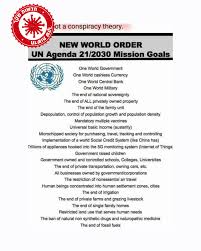The UN Agenda 2030: A Blueprint for Sustainable Development
The United Nations Agenda 2030, also known as the Sustainable Development Goals (SDGs), is a comprehensive plan of action adopted by all UN Member States in 2015. It serves as a universal call to action to end poverty, protect the planet, and ensure prosperity for all by the year 2030.
Key Components of the UN Agenda 2030
The Agenda consists of 17 interconnected Sustainable Development Goals, each addressing specific global challenges. These goals range from eradicating poverty and hunger to promoting gender equality, ensuring access to quality education and healthcare, and combating climate change.
Importance of the UN Agenda 2030
The UN Agenda 2030 represents a shared vision for a better future, emphasising the need for collaboration between governments, businesses, civil society, and individuals. By setting clear targets and indicators for progress, it provides a roadmap towards a more sustainable and inclusive world.
Challenges Ahead
While significant progress has been made towards achieving the SDGs since their adoption, many challenges remain. Issues such as inequality, environmental degradation, conflicts, and lack of resources continue to hinder global efforts towards sustainable development.
Call to Action
As we approach the year 2030, it is crucial for all stakeholders to redouble their efforts in implementing the UN Agenda. Governments must prioritise sustainable policies, businesses should adopt responsible practices, and individuals can contribute through conscious consumption and advocacy.
Conclusion
The UN Agenda 2030 offers a framework for building a more equitable and sustainable world for present and future generations. By working together towards common goals outlined in the SDGs, we can create positive change that benefits not only us but also our planet.
Frequently Asked Questions About the UN Agenda 2030 and Its Goals
- Who wrote the 2030 Agenda and the 17 goals?
- What is Agenda 2030 full name?
- What is the UN 2030 Agenda for?
- What is the main aim of 2030 Agenda?
- What are the 5 main elements of the 2030 Agenda?
Who wrote the 2030 Agenda and the 17 goals?
The 2030 Agenda and the 17 Sustainable Development Goals (SDGs) were formulated by a collaborative effort involving all United Nations Member States. These goals were not written by a single individual or entity but were developed through extensive consultations and negotiations among governments, international organisations, civil society groups, and other stakeholders. The process of crafting the Agenda was inclusive and transparent, reflecting the shared commitment of the global community to address pressing challenges and work towards a more sustainable future for all.
What is Agenda 2030 full name?
The full name of Agenda 2030 is the United Nations Agenda 2030 for Sustainable Development. This comprehensive plan of action, adopted by all UN Member States in 2015, outlines a set of interconnected Sustainable Development Goals aimed at addressing global challenges and promoting a more sustainable and inclusive future by the year 2030.
What is the UN 2030 Agenda for?
The UN 2030 Agenda, also known as the Sustainable Development Goals (SDGs), serves as a comprehensive plan of action adopted by all UN Member States in 2015. This agenda aims to address a wide range of global challenges and provide a universal framework for sustainable development. The primary goal of the UN 2030 Agenda is to end poverty, protect the planet, and ensure prosperity for all by the year 2030. By setting clear targets and indicators for progress, this agenda guides efforts towards creating a more inclusive, equitable, and sustainable world for present and future generations.
What is the main aim of 2030 Agenda?
The main aim of the 2030 Agenda, also known as the Sustainable Development Goals (SDGs), is to provide a universal blueprint for a more sustainable, inclusive, and prosperous future for all. By setting out 17 interconnected goals, the Agenda aims to address key global challenges such as poverty, inequality, climate change, and environmental degradation. Through collective action and cooperation among governments, businesses, civil society, and individuals, the 2030 Agenda seeks to create a world where no one is left behind and where economic, social, and environmental development go hand in hand.
What are the 5 main elements of the 2030 Agenda?
The 2030 Agenda, also known as the Sustainable Development Goals (SDGs), encompasses five main elements that form the foundation of its comprehensive approach to global development. These elements include ending poverty in all its forms, ensuring food security and sustainable agriculture, promoting health and well-being for all, providing quality education for all, and achieving gender equality and empowerment of all women and girls. Each of these elements plays a crucial role in addressing the interconnected challenges faced by societies worldwide and working towards a more sustainable and inclusive future for all.
